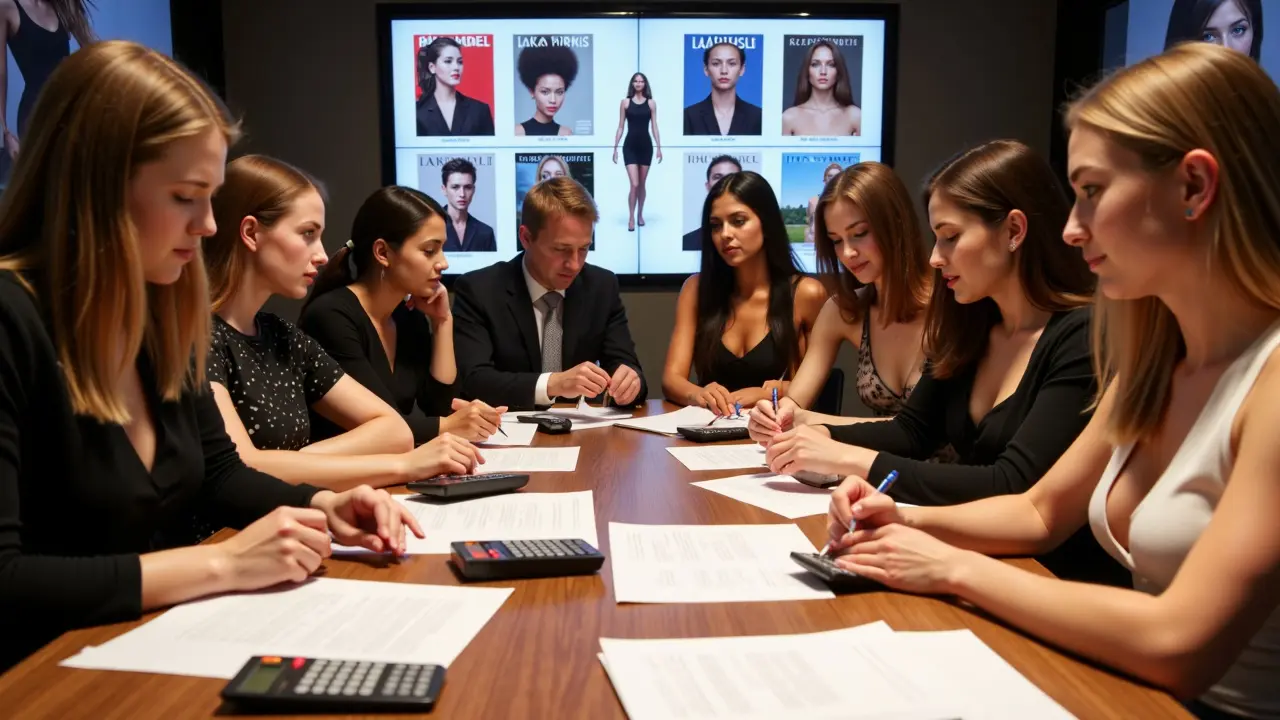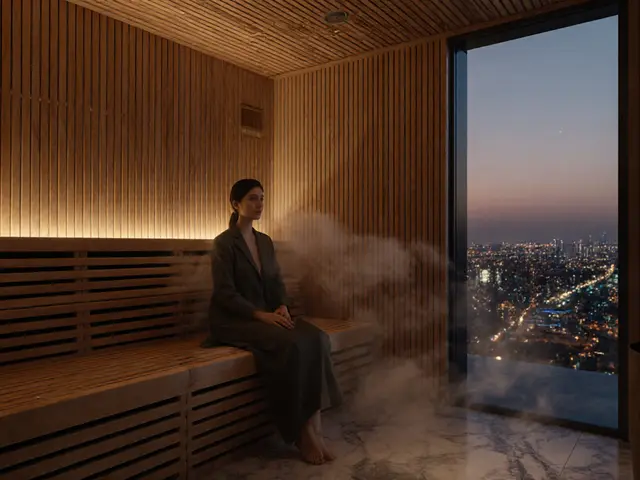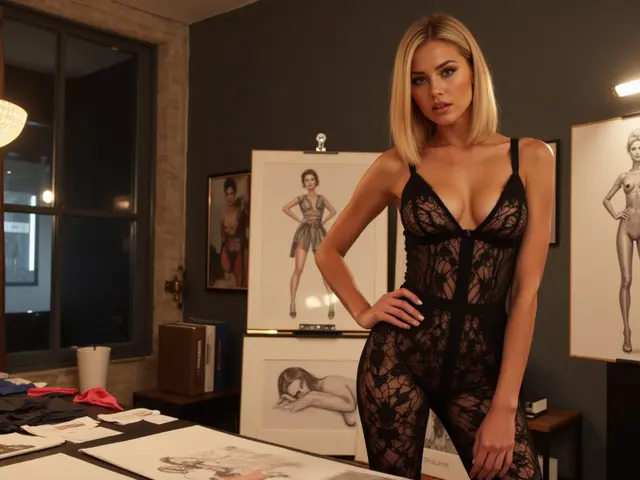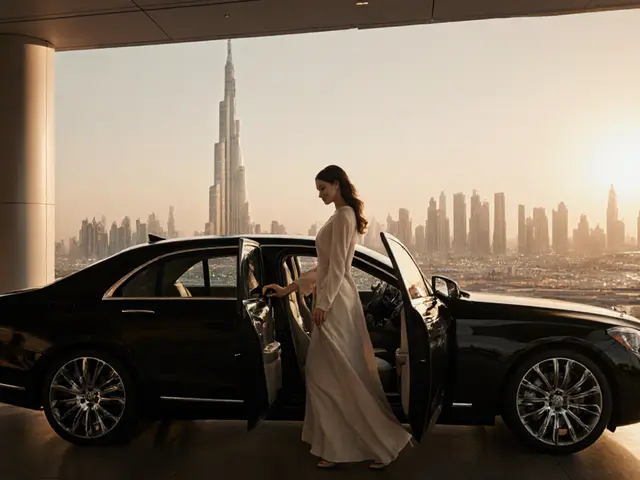Some people think models rake in huge paychecks just from standing in front of a camera. Spoiler alert: it's not always the glamorous payday you might picture. If you're eyeing a modeling gig, or hiring a model for your next project, you want the numbers—no fluff, just what you can realistically expect when the invoice hits.
The truth? Model pay for a single photoshoot is all over the map. You might see figures as low as $50 per hour for local e-commerce work, but high-end fashion shoots can skyrocket into thousands a day. Most commercial photoshoots settle somewhere between $150 and $500 an hour, but it heavily depends on the shoot, experience, and even the city. Big names and magazines pay more, but those breaks are rare for most beginners.
Ever wondered why there’s such a crazy range? It’s not just about looks or who you know. Usage rights, shoot duration, location, and whether photos end up in ads or just on a website—all these things matter. Plus, agencies often take a cut. No surprise, newer models or those working freelance sometimes have to hustle to get what they deserve.
- Key Points: Model Photoshoot Pay at a Glance
- Quick Answer: Typical Photoshoot Rates
- A Real-World Look at Modeling Fees
- Factors That Impact Model Pay
- Tips for Negotiating & Booking
- FAQ: Model Photoshoot Pay Explained
Key Points: Model Photoshoot Pay at a Glance
Getting a straight answer about model photoshoot pay can feel like chasing your tail. Here’s what you really need to know if you want to avoid surprises.
- Model photoshoot rates swing wildly based on your experience, the type of shoot, and the final use of your photos.
- Beginner models might earn as little as $50–$100 an hour, often for local or social media work.
- Commercial gigs (think brands, online stores, or catalogs) pay more—typically $150–$500 per hour, but can push higher if ad budgets are big.
- Editorial and high-fashion jobs can mean $200–$2,500 per day, but these gigs are harder to land and sometimes pay less than you’d expect “for exposure.”
- Agencies usually take a cut—anywhere from 10–20% of what you earn, sometimes more.
- Usage rights matter! If your photos end up on a billboard or in a national ad, you should be paid more compared to just being in a lookbook or on a website.
| Type of Shoot | Average Pay (Hourly) | Typical Day Rate | Common Extras |
|---|---|---|---|
| Local/E-commerce | $50–$150 | $300–$800 | May include travel money |
| Commercial/Lifestyle | $150–$500 | $600–$2,000 | Usage fees, agency cuts |
| Editorial/High-Fashion | $100–$250 | $500–$2,500 | High risk of low “exposure” pay |
| Runway/Events | $100–$300 | $500–$2,000 | Prep and fitting fees possible |
If you’re booking or being booked, always ask about usage, travel, and whether you’ll need to bring your own clothes or makeup. Rates can jump with more responsibility or exclusive image rights. Being clear up front saves confusion (and money) later.
Quick Answer: Typical Photoshoot Rates
If you’re here for the straight-up numbers, here’s what you need to know about how much models get paid for a model photoshoot. Rates really depend on the type of shoot, your location, experience, and whether you’re working through an agency or handling bookings yourself.
In most major U.S. cities, these are the usual pay ranges you’ll see for photo modeling gigs:
| Type of Photoshoot | Pay Rate |
|---|---|
| Local/runway (new faces) | $100 - $300/day |
| Commercial/lifestyle | $150 - $500/hour |
| E-commerce/product | $50 - $250/hour |
| Magazine/editorial | $100 - $500/day |
| High-fashion (big brands) | $1,000 - $10,000+/day |
| Social media collab | Gifts to $300/post |
For reference, an average commercial gig in LA or New York often lands around $350 an hour, but smaller markets might stay closer to $100 per hour. Agencies usually skim off 15-20% before the model sees their payment. And if you’re working with a big name brand or a national ad campaign, that’s when the fees can go way up. But honestly, those jobs are the exception and not the rule for most working models.
Here’s a quick list of what also affects the final pay:
- How long the shoot lasts (full day vs. half day or a couple of hours)
- Where your images will be used (local ads pay less than national campaigns)
- Model’s experience and portfolio strength
- Market location (big-city shoots usually pay more than small-town gigs)
- Agency representation (agency jobs usually net higher individual rates but take a commission)
The bottom line: Most models for regular commercial work take home between $200 and $2,000 per shoot. If you’re just starting out, expect to be at the lower end. Seasoned, agency-repped models and those with unique looks can charge way more, especially for high-profile clients.
A Real-World Look at Modeling Fees
The world of modeling is built on numbers—and not always as high as you'd expect. Here's how the pay actually pans out, depending on the type of photoshoot and the model's experience.
For local or entry-level commercial work (think e-commerce brands, catalogues, or small-time ads) most models earn anywhere from $100 to $500 for a half-day session. Sometimes it's paid hourly, from $50 to $150 an hour, but half-day (up to 4 hours) and full-day (up to 8 hours) rates are way more common. Brands tend to pay more if they want exclusive or long-term use of the images, so don't skip reading those contracts.
High fashion shoots—the stuff you see in Vogue or big runways—pay a lot more, but not everyone gets that gig. Magazine work can actually pay the least (sometimes as low as $100–$200 per day for newer models), but the exposure is gold. A major ad campaign, though, can hit $5,000 to $20,000 for a session if the model is established or famous. When it comes to social media influencers, some get paid per post instead of per shoot. That can range from $200 to more than $5,000 per sponsored photo, depending on follower count and engagement.
Here’s a useful table with typical model photoshoot rates for different types of gigs in 2025:
| Type of Photoshoot | Beginner Model | Experienced Model | Top Model/Celebrity |
|---|---|---|---|
| Local Commercial/E-commerce | $100–$300 (half-day) | $500–$1200 (full-day) | $2000+ (full-day) |
| Editorial/Fashion Magazine | $100–$200 (day rate) | $500–$1000 (day rate) | $2000–$10,000+ |
| Ad Campaigns | $500–$1500 (per shoot) | $2000–$7500 (per shoot) | $10,000–$20,000+ |
| Influencer Content (per post) | $200–$600 | $1000–$3000 | $5000+ |
Keep in mind, agencies usually take a cut—anywhere from 10% to 20%—so what hits your bank account may look slimmed down. Plus, if you’re freelancing, you’ll need to factor in your own travel, wardrobe, and sometimes even hair and makeup costs. It’s not all glitz—models juggle a ton behind the scenes just to get paid fairly. If you’re serious about getting into the business, start with smaller brands or local photographers and work your way up. Document each shoot, and always save your receipts. The more experience and connections you build, the bigger those numbers get.

Factors That Impact Model Pay
This is where things get interesting—and sometimes a little confusing. There isn’t a universal rate for how much models earn during a model photoshoot. Let’s break down the biggest reasons why one person’s check might look totally different from someone else’s.
- Type of Photoshoot: High-fashion campaigns, commercial ads, e-commerce, catalog, beauty shoots—each pays differently. For instance, a quick catalog gig could pay $100 per hour, while a national ad campaign might throw $2,000 at a model for one day. Editorial shoots for well-known magazines like Vogue might pay less than commercial jobs but offer career-boosting exposure instead.
- Experience and Portfolio: Beginners usually start at the lower end, but if you've got a strong resume or recognizable face, agencies and brands will pay more. Some well-established models earn five or six figures for a single campaign.
- Usage Rights: Where and how the images are used is huge. Photos for social media or local ads are cheaper, but global ad rights or billboards? Double or triple the pay. Always check if the deal is “buyout” (one-time payment for unlimited use) or if you get paid more for broader usage.
- Agency vs. Freelance: Models booked through an agency may have more stable rates but give up a portion (often 20%) as a commission. Freelancers negotiate directly, but that can mean more hustle and less consistency.
- Location: Shoots in New York, London, or Paris usually pay more than in smaller cities. Clients’ budgets and cost of living matter. London Fashion Week rates are different from what a new brand in a small town might offer.
- Project Budget: Big brands simply have deeper pockets. If the client is a startup or indie label, expect pay to be on the lower end. Don’t be afraid to ask about the project’s budget before you agree.
Here’s a quick snapshot comparing typical pay levels based on different factors:
| Factor | Example Rate | Notes |
|---|---|---|
| Editorial (Magazine) | $100 - $250/day | Lower pay, high exposure |
| Commercial Campaign | $1,000 - $5,000/day | Big brands pay more, wide usage |
| Local Brand/E-commerce | $40 - $150/hour | Rates vary by city and negotiation |
| Model Experience | +30% to +100% on base rate | Top faces get premium |
| Agency Fee | Typically 20% deducted | May also charge client 20% |
If you’re not sure where you fit in, compare your experience and the job type to these ranges. When in doubt, ask around or check with your agency. Models often share their rates on industry forums, so you can get a fair idea before saying yes to the job.
Tips for Negotiating & Booking
Booking a model photoshoot is more like ordering from a build-your-own-burger menu than buying a pre-packed snack. Everything is up for negotiation: the total hours, location, wardrobe, if there’s travel, whether the pictures are for billboards or just Instagram. And yes—every detail affects the paycheck for both the model and the client.
If you’re a model, here are some things that matter for better pay and a smooth booking:
- Know Your Worth: Get familiar with standard rates for your type of modeling and region. For example, editorial shoots in New York can command $200–$500 per hour, while commercial e-commerce sessions might pay $75–$200 per hour.
- Usage is Everything: Ask exactly how and where your photos will show up. Expect higher fees for national campaigns than for a small brand’s website. If it ever goes to TV or a billboard, ask about buyouts or bonuses.
- Contracts, Always: Never confirm details over Instagram DMs. Get the agreement in writing, including payment, hours, breaks, and image rights.
- Watch for Red Flags: Beware of “test shoots” that offer exposure but no payment. Also, avoid any shoot where the pay or expectations feel shady or unclear.
- Factor in Prep and Travel: If you spend two hours just getting to a location, you should be compensated—or at least reimbursed for travel costs.
- Agency Help: If you’re with an agency, let them handle the negotiation. It’s what they do, and it can boost your rate 20–30%. But remember, agency fees usually come out of your final paycheck.
Hiring a model? Here’s how to make it work for everyone:
- Clear Communication: Share all the important info upfront—shoot concept, usage, dates, payment timeline, and any special requirements (like swimsuit or product shots).
- No Surprises: Respect everyone’s time. Don’t spring overtime or extra outfits on models without agreeing on extra compensation first.
- Quick Payment: Industry standard is 30 days, but prompt payment builds trust, especially with freelancers. Don’t delay—models talk!
If you’re wondering what’s typical, here’s a quick stat table based on 2024 US industry reports:
| Type of Shoot | Average Hourly Rate | Common Booking Terms |
|---|---|---|
| E-commerce | $75–$200 | 2–6 hours, half upfront, usage limited to websites |
| Fashion Editorial | $200–$500 | Half day, payment net 30, print & digital mags |
| Commercial/Advertising | $500–$2,500 | Full day, 1-year usage, buyouts possible |
| Social Media Campaigns | $100–$400 per post | Single posts, influencer contracts |
One last thing: Always be honest about your experience. If you’re newer, clients don’t expect a supermodel rate. If you have a killer portfolio, use it as leverage. And never underestimate the power of being easy to work with—sometimes, that wins you repeat gigs that pay more each time.
FAQ: Model Photoshoot Pay Explained
People have all sorts of questions about how model photoshoot pay really works, and honestly, some of the details can be surprising. Let’s answer the stuff everyone’s really asking (but maybe too shy to bring up).
How much do models make per hour or per shoot?
This varies a lot. Beginner models might earn between $50 and $150 an hour for local jobs. If you look at big-name campaigns, top agency models can see rates of $2,000 to $10,000+ for a full day—but that’s not the norm for most gigs.
Is pay always hourly?
Nope, it’s not always hourly. Many shoots pay by the day, half-day, or even a flat rate for the whole project. Fashion shows often pay per event; commercial work might be by the hour. Always clarify before you start.
Do agencies take a cut?
Yep. Most agencies will take anywhere from 15% to 25%—sometimes more if they’re also charging the client a fee. For freelance models, there’s no agency cut, but finding jobs (and getting paid on time) can take more effort.
What’s the average pay for different photoshoot types?
| Type of Shoot | Average Rate (USD) |
|---|---|
| Local commercial/e-commerce | $50 - $200 per hour |
| Fashion/editorial (magazines) | $100 - $500 per day (sometimes up to $1,500 for big names) |
| High-end advertising | $1,000 - $10,000+ per day |
| Trade-for-prints (TFP/Collabs) | $0 (might get portfolio images instead) |
Does experience matter when it comes to pay?
Absolutely. The longer you’ve been modeling—and the bigger your portfolio—the higher your rates can be. Some experienced models earn bonuses if the work is for a big brand or used worldwide.
What about usage rights?
This detail can change everything. If your image is used in a national ad, you should earn more. Local or social media use usually pays less. Always ask how and where your photos will be used before agreeing on a rate.
"The most important thing you can do as a model is to understand your usage rights. That's where the real money is for most seasoned pros." – Sarah Ziff, founder of Model Alliance
Do you need to pay for your own travel or wardrobe?
It depends. Many commercial gigs in your own city cover at least your transport. For bigger jobs out of town, travel and accommodations are usually covered by the client—but ask upfront! Small brands or independent shoots might expect you to provide your own basics.
Can models charge more for special skills?
Definitely. Things like hand modeling, underwater shoots, or fitness modeling can bump your rate, sometimes by double standard fees, just for the extra skill set.
Got a question not answered here? Ask around. Other models are actually great sources for real-world experience. And remember, if the numbers sound too good to be true, double-check the details and who you’re working with before saying yes.






